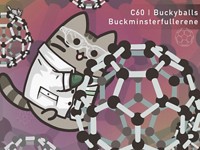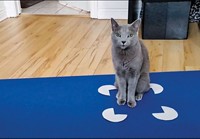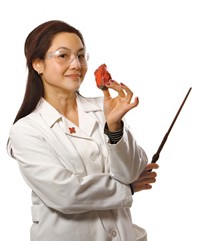Advertisement
Grab your lab coat. Let's get started
Welcome!
Welcome!
Create an account below to get 6 C&EN articles per month, receive newsletters and more - all free.
It seems this is your first time logging in online. Please enter the following information to continue.
As an ACS member you automatically get access to this site. All we need is few more details to create your reading experience.
Not you? Sign in with a different account.
Not you? Sign in with a different account.
ERROR 1
ERROR 1
ERROR 2
ERROR 2
ERROR 2
ERROR 2
ERROR 2
Password and Confirm password must match.
If you have an ACS member number, please enter it here so we can link this account to your membership. (optional)
ERROR 2
ACS values your privacy. By submitting your information, you are gaining access to C&EN and subscribing to our weekly newsletter. We use the information you provide to make your reading experience better, and we will never sell your data to third party members.
Analytical Chemistry
Newscripts
How Cats Lap, Periodic Table On A Hair
by Stephen K. Ritter
January 24, 2011
| A version of this story appeared in
Volume 89, Issue 4
A team of engineers watching a bunch of cats drinking has determined that felines take full advantage of the laws of physics to delicately LAP UP A LIQUID. Cats touch the tops of their tongues on the liquid surface and then pull the fluid into their mouths, Massachusetts Institute of Technology’s Pedro M. Reis and colleagues explain. Dogs, on the other hand, plunk their tongues into a liquid, piercing the surface and cupping the fluid on the bottom of their tongues before scooping it into their mouths.

In order to drink, animals with incomplete cheeks such as cats and dogs defeat gravity by using their tongues to displace water or other liquids upward into their mouths. Animals with complete cheeks such as pigs, horses, and people use suction to draw water into their mouths, although humans’ opposable thumbs and larger brains enable them to adopt multiple drinking strategies.
Reis and coworkers used high-speed video analysis to observe that cats curve their tongues downward so that the top surface lightly touches the liquid surface without piercing it. When a cat lifts its tongue rapidly, the fluid adheres to the tip and is drawn up into a column that grows longer by inertia. The cat then closes its mouth to capture the liquid just as gravity breaks up the column and the fluid begins to fall.
The findings provide pet lovers with more hard evidence on the differences between cats and dogs. But to justify the study, which was published in the journal Science (DOI: 10.1126/science.1195421), Reis and colleagues say the results will help shed more light on the mechanics of appendages that lack a skeletal support, such as elephant trunks and octopus arms. That knowledge in turn could provide new inspiration for developing soft robotics technology.
In keeping with nanotechnologists’ irresistible urge to etch cute things on tiny objects, scientists at the University of Nottingham, in England, have created what they believe is the WORLD'S SMALLEST PERIODIC TABLE by drawing it on a human hair. But this isn’t just any human hair. It belongs to Nottingham chemistry professor Martyn Poliakoff, a polymath known for his scientifically correct frizzy mop top.

The team accomplished the nanoscale feat by using a gallium ion beam in a scanning electron microscope to blast out the symbols of the 118 elements on the hair shaft. Poliakoff says giving up one of his hairs in the name of science was a pleasant experience. Microscopist Michael Fay used a pair of scissors to obtain the hair rather than plucking it, “so it didn’t hurt,” Poliakoff says. “I am amazed at how rough the surface of the hair is in the SEM image, though.”
The tiny table measures about 100 by 50 μm—small enough for 1 million of them to fit on a standard-size Post-it note, Poliakoff says. “I am ashamed to say that I haven’t worked out how many periodic tables would fit on my whole head of hair,” he tells Newscripts.
Although the tattooed hair was a birthday present for Poliakoff, it does have the higher purpose of showing people how nanowriting is done and the powerful capabilities of scientific instrumentation, he says. The complete story is captured on a video that is part of the Periodic Table of Videos, a project produced by Poliakoff and his Nottingham colleagues.





Join the conversation
Contact the reporter
Submit a Letter to the Editor for publication
Engage with us on Twitter